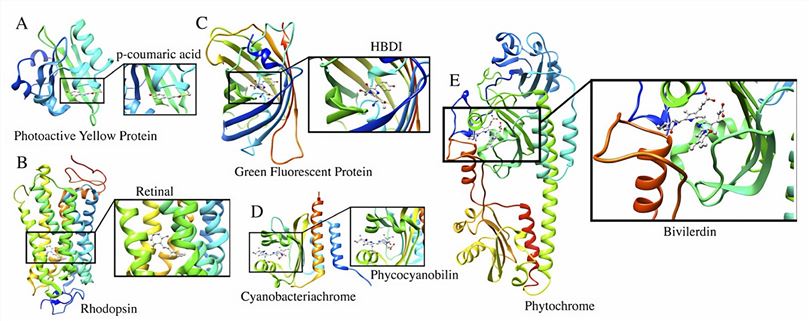Introduction of Photosensitive Proteins
Responding to different light conditions is crucial for many organisms. Special proteins known as photosensitive proteins provide bacteria, plants and animals with this ability. Photosensitive proteins are a class of proteins that can respond to light signals and produce physiological responses in the living body. They are also known as light-sensitive proteins, and they have important physiological significance in the regulation of biological clocks and cell signal transmission. Some typical examples include rhodopsin in retinal photoreceptor cells in vertebrates, phytochromes in plants as well as bacteriorhodopsins in certain bacteria. They are involved in the regulation of light responses, such as visual perception, phototropism, and phototaxis. In addition, they play a crucial role in responding to light-dark cycles such as circadian rhythms, as well as other photoperiods, including regulating the mating season in animals and flowering time in plants.
Structure
The typical structure of photosensitive proteins contains a protein part and a non-protein part. Non-protein chromophores respond to light via photoisomerization or photoreduction reactions, which trigger changes in receptor proteins that trigger signal transduction cascades. Chromophores found in photoreceptors include retinals, flavins and bilitins.
 Fig.1 Applications of light sensors in bacteria.1
Fig.1 Applications of light sensors in bacteria.1
Photosensitive Protein in Organisms
Photosensitive proteins are involved in the perception and response to light in various organisms. They can be found in both animals and plants. Furthermore, some bacteria, such as Halohodospira halophila, contain photoactive yellow protein.
- Photosensitive proteins in animals
Many photosensitive proteins are an integral part of animal life activities. For example, melanopsin, which exists in the vertebrate retina, is closely related to the regulation of circadian rhythm. Photoprotease receives light of various colors in the cones of the vertebrate retina. In addition, protein kinase C is strongly linked to photoreceptor inactivation and retinal degeneration.
- Photosensitive proteins in plants
Similar to animals, there are many photosensitive proteins in plants to regulate their growth and development. These specific structures allow plants to perceive light in different wavelength ranges. Plants sense different wavelengths of light to change their position and trigger developmental transitions. For example, when a seed is exposed to no light, its stem will elongate upwards. When it breaks through the soil surface, the activated photoreceptors cause a change in the developmental program, and the plant begins to produce chlorophyll and shifts to photosynthetic growth.
Applications
Photosensitive proteins have gradually emerged as an important tool to study the dynamic changes in protein structure related to their function. Such proteins can be triggered with laser light, thus enabling excellent time resolution when studying the dynamic changes in their structure. Furthermore, since they are signal transduction proteins, one would expect large conformational transitions to participate in the formation of their signaling states. Importantly, the color transition of these proteins is a good indicator of the structural transition versus the timeline.
If you are interested in our anti-photosensitive protein antibodies (Abs), please feel free to contact us.
For more details about our products, please click the link below:
Reference
- Liu, Zedao, et al. "Programming bacteria with light—sensors and applications in synthetic biology." Frontiers in microbiology 9 (2018): 2692. Distributed under Open Access license CC By 4.0, without modification.
-
-
Anti-NifH Antibody (Chicken pAb) (CAT#: MAS-0524-YJ30)
- Host: Chicken
- Reactivity: Anabaena PCC7120, C. butyricum, C. orbicularis, C. raciborskii CS-505, Dolichospermum sp., Nostoc sp, R. palustris, Trichodesmium sp., nodules of Trifolium repens L., V. natriegens 14048
- Applications: IF; IHC; WB
- Conjugations: Unconjugated
-
-
-
Anti-R. spheroides b-Hydroxybutyrate dehydrogenase Antibody (Rabbit pAb) (CAT#: MAS-0524-YJ29)
- Host: Rabbit
- Reactivity: R. spheroides
- Applications: ELISA; ICC; IHC-P; DB; IB
- Conjugations: Biotin
-
-
-
AibGenesis™ Anti-H. marismortui bacteriorhodopsin I D94N Monoclonal Antibody (Mouse mAb) (CAT#: MAS-0524-YJ31)
- Host: Mouse
- Reactivity: H. marismortui
- Applications: IF; ELISA; WB
- Conjugations: Conjugation could be customized
-
For Research Use Only. Do NOT use in humans or animals.